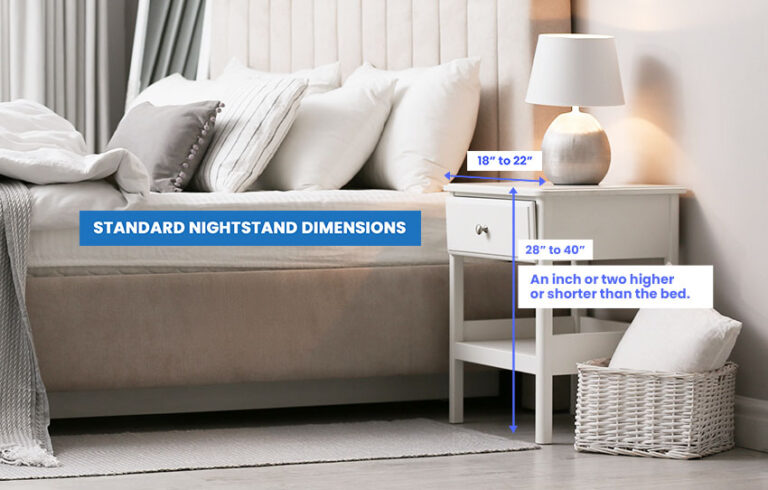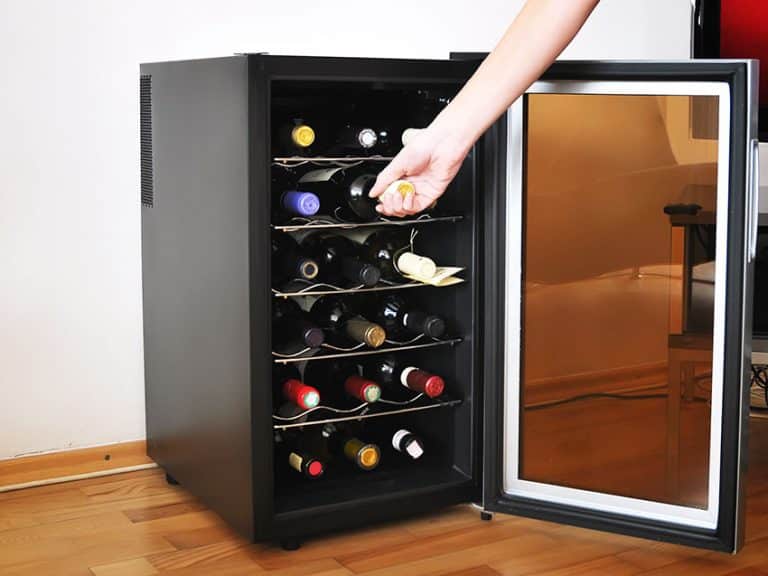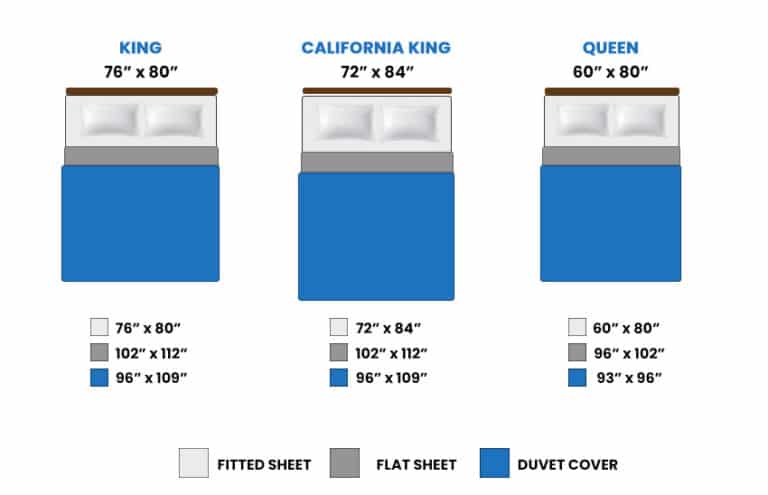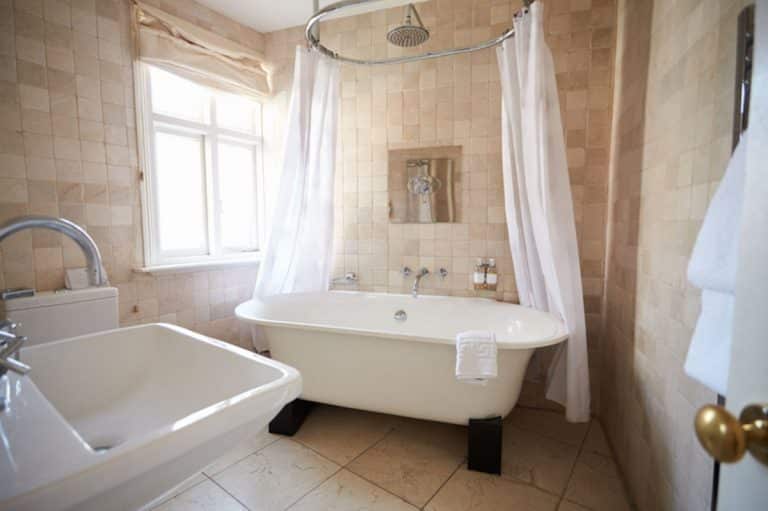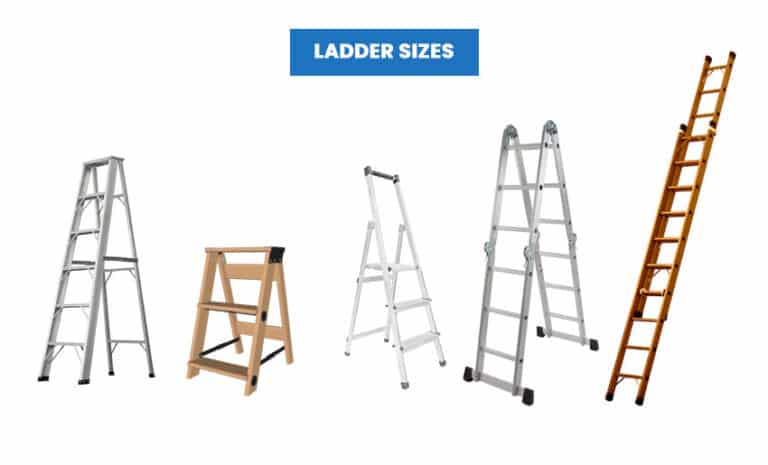9 Top Toilet Dimensions: Standard Types & Seat Sizes
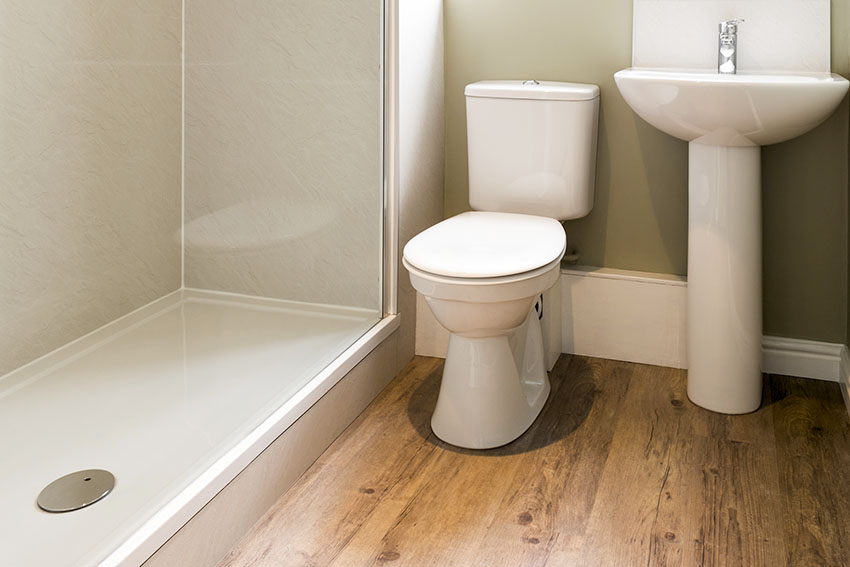
One of the things that are a fixture in most households is a toilet, and many homeowners need to figure out the perfect size to ensure that it will meet their and their home’s requirements. Toilets are available in many types and dimensions. Some even have added features that can affect the size, like an integrated bidet, taller seat height, and more complicated flush capabilities.
With all the toilet features available, some homeowners might find choosing the perfect one complicated, but as long as they know what they need and the features they want to include, choosing will be a breeze.
Standard Toilet Sizes
These standard toilets are available in many sizes, with a standard depth of 27 to 30 inches or 69 to 76 centimeters. In comparison, its widths are around 20 inches or 51 centimeters, with heights ranging from 21 to 31 inches or 53 to 79 centimeters.
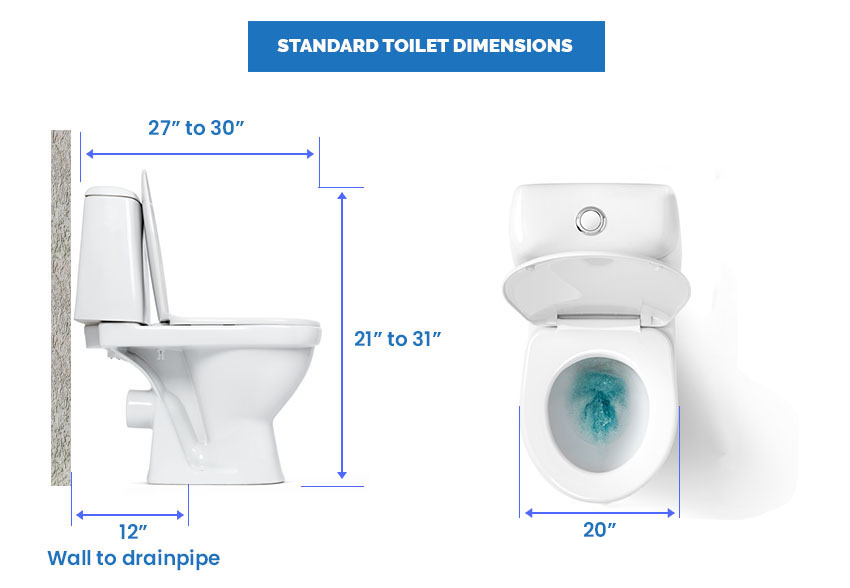
Another important measurement of a standard toilet that homeowners need to know is the rough-in measurement, which refers to the distance between the back wall where it is affixed, extending to the center of a drainpipe of a standard toilet’s base.
The rough-in size allowance is typically around 12 inches or 31 centimeters.
Toilets are manufactured and sold in many sizes and design features, with some having unique styles to make them more attractive to homeowners, but standard types of toilets are always available.
ADA Dimensions
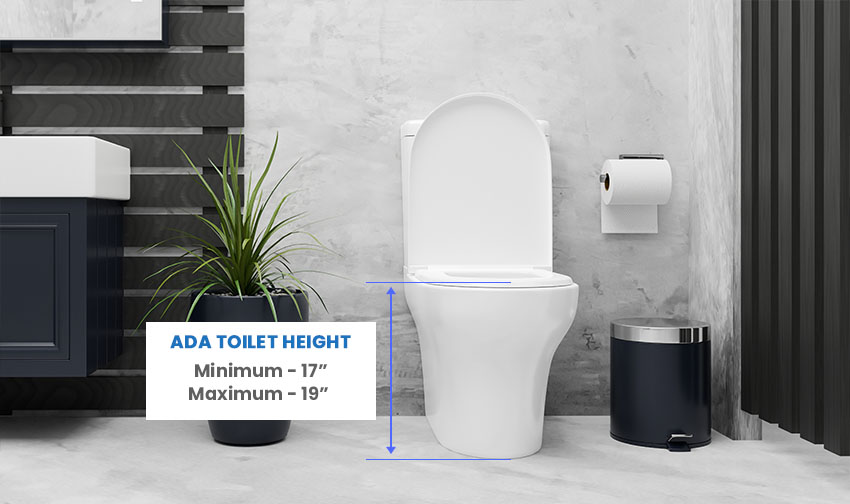
For a toilet to be ADA-compliant, a crucial requirement for some homes and, most significantly, business establishments and offices to ensure accessibility, it needs to meet several provisions established by the (IPC) International Plumbing Code.
Although most toilets will have the same widths, one of the factors that will make them distinct from ADA-approved models is the seat height. The required water closet seat height from the seat to the floor is 17 inches or 43 centimeters at the minimum and 19 inches or 48 centimeters at the maximum.
This makes the size accessible for everyone, and municipalities require most commercial establishments to adhere to these requirements.
Another requirement is that all facilities have elongated type designs while the seats should be smooth and nonabsorbent to ensure maximum accessibility and hygiene.
Elongated Dimensions

There are two toilet bowl sizes, and that is round and elongated, with elongated being the shape approved by ADA because it tends to be larger and more comfortable for everyone.
One way to determine if the design is elongated is by looking at it from above, and it will be pretty easy to identify an elongated toilet bowl because of its slightly pointed seat.
Most elongated toilets have seat dimensions of 18 and a half inches or around 47 centimeters.
One way to ensure these dimensions are right on your model is to measure from the toilet seat bolt to the front of the bowl. Because of its elongated seat tip, which is egg-shaped, it will be slightly longer than a round shape.
Elongated seat width measures 14 inches or 36 centimeters, but it can go up to 15 inches or 38 centimeters, according to specific product styles.
Round Dimensions
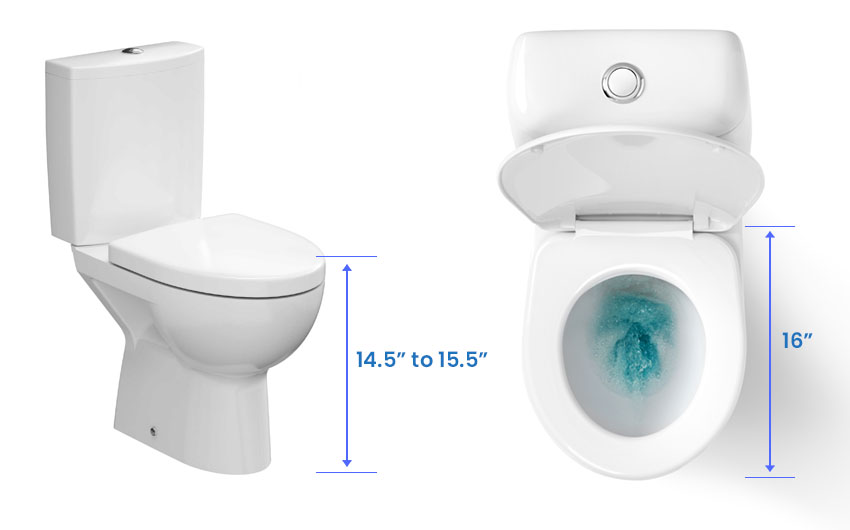
Other than the elongated style, there is the round toilet, which is the more traditional choice, making them a staple in older homes. One of the best features of a round seat is its smaller footprint, which is the ideal option for small bathrooms.
Although they are not as round as they are named, they are easy to measure from front to back by measuring from the front of the bowl to the seat bolt.
More or less, round toilets are measured and have a dimension of 16 and a half inches or around 42 centimeters. In contrast, round seat heights range from 14 and a half to 15 and a half inches or 37 to 39 centimeters.
Another benefit of round shapes is they are ideal for children’s bathrooms since they are more comfortable for them compared to elongated designs.
Small Dimensions

One of the main things that will make a small toilet different from the conventional elongated or round ones is that its smaller profile tends to be slimmer and less deep.
Small toilets start with a depth of 25 inches or 64 centimeters; they are narrower with a minimum width of 13 inches or 33 centimeters, and their heights can begin at 28 inches or 71 centimeters. Of course, depending on the brand and model a homeowner is looking at, sizes can vary widely.
Comfort Height Dimensions
A comfort height toilet has a height of 17 to 19 inches from the floor up and is taller than the more conventional toilets.
It may surprise some that there are different restroom options for many households, depending on their needs. Still, there are, and it is essential to look at the perfect one to ensure it is usable for everyone.
One of the products is the comfort height style, which is the ideal design, ticking all the boxes for an ADA-compliant one.
Wall Hung Dimensions
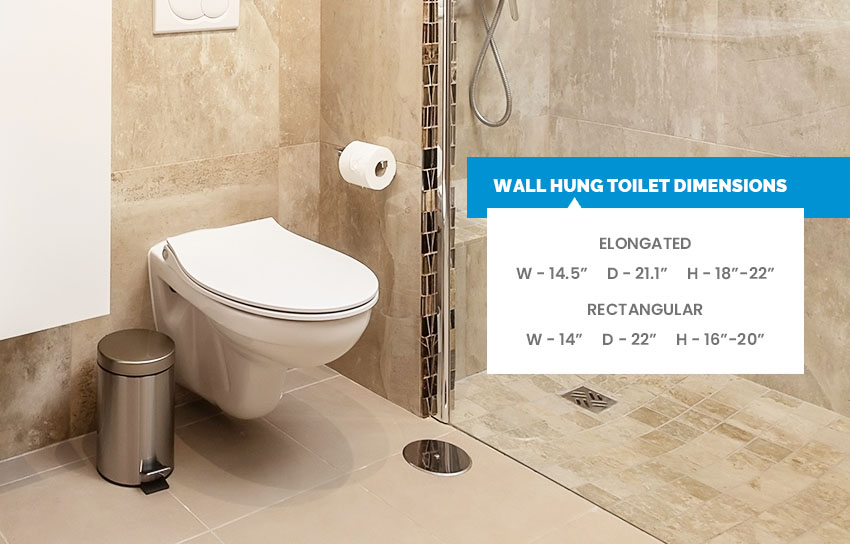
One of the more modern options is the wall-hung toilets. They will look sleek and in place for bathrooms with modern and minimal interior design, and they also take up less floor space since they are mounted on walls. Because of this, they are also the easiest option to clean with less surface areas to cover.
A wall-mounted toilet with an elongated seat has a width of 14 and a half inches or 36 centimeters, a depth of 21.1 inches or around 54 centimeters, and a height ranging from 18 to 22 inches or approximately 46 to 56 centimeters.
Another option is an elegant rectangular wall-hung toilet fit for a modern bathroom. This option has a width of 14 inches or 36 centimeters, a seat depth of 22 inches or 57 centimeters, with a height ranging between 16 to 20 inches or about 41 to 51 centimeters.
Composting Toilet Measurements

Several specific homes in need of an efficient toilet solution that does its function plus is space-efficient are tiny homes, mobile homes, boats, and RVs.
A standard and conventional toilet will take up space in these homes, and since some of them can be moved, it is also crucial to ensure that the plumbing is specialized for such needs, and in comes composting toilets.
Composting toilets are waterless, self-contained, and have excellent features for aeration and ventilation for tinier homes. Many options are available for this type, and homeowners can choose different sizes depending on their specific needs.
Seat height for a composting toilet can range from the smaller 17.3 inches or 44 centimeters to bigger ones at 26 and a half inches or 67 centimeters. Seat widths also differ, with some at 19.95 inches or 51 centimeters and others as wide as 22 and a half inches or 57 centimeters.
The depths can also vary wildly, with some requiring a shallow depth of 20 5/8 inches or 52 centimeters while others at 46 inches or around 117 centimeters.
An incinerating toilet is similar to a composting model but uses electric heat to break down waste, while a composting model uses nature’s composting process.
Corner Toilet Design Dimensions
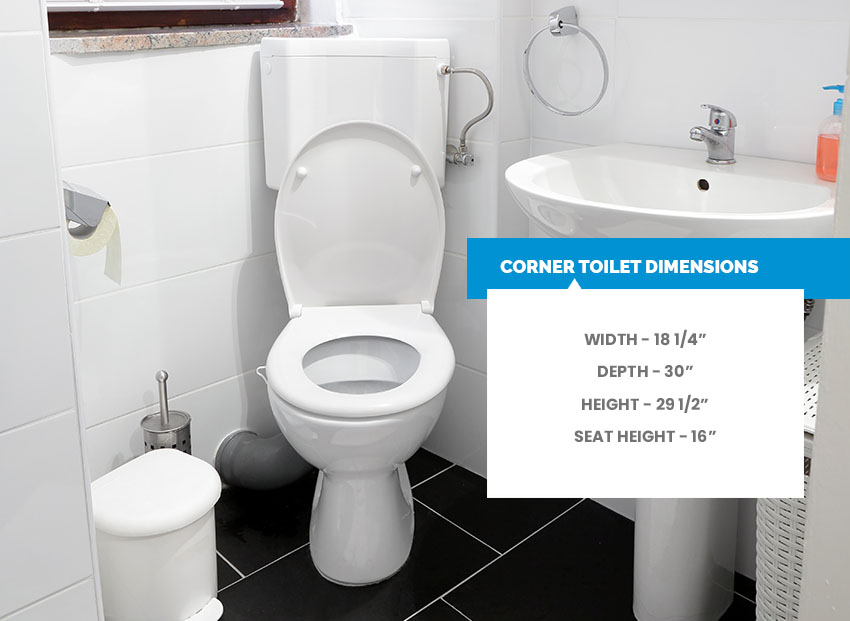
Aside from going for a smaller commode for a small bathroom, one of the many ways a homeowner can save space in their comfort rooms is by looking to use a corner toilet for their household.
Conventional products tend to be a little too big, and a corner model is a happy compromise since it does not take the function away, even though it is space-saving.
The standard corner toilet has dimensions of 29 and a half or around 75 centimeters from the base to the highest point, which is the water tank.
It has a depth of 30 and a half inches, or 77 centimeters, and an overall width of 18 1/4 inches, or 46 centimeters. At the same time, the bowl height is 16 inches or around 41 centimeters from the floor to the seat.
Toilet Seat Dimensions
The toilet seat size will differ according to a specific product shape, either round or elongated. Getting the size right for theseseats is vital because accidents happen and they can break, and knowing the size will help buy a replacement seat for the bowl. A seat made for a round model will not fit an elongated one, and vice versa.
Most seats for a round bowl measure around 16 and a half inches or about 42 centimeters. At the same time, an elongated one is approximately 18 and a half inches or around 47 centimeters.
It’s essential to order the right seat for the right shape, and measuring twice for one is advisable to ensure it is the right fit.
If you have an upflush, or a dual flush toilet type, they generally have the same dimensions as a standard model. Low flow toilets generally have the same seat sizes but smaller water tanks.
Toilet Drain Pipe Size
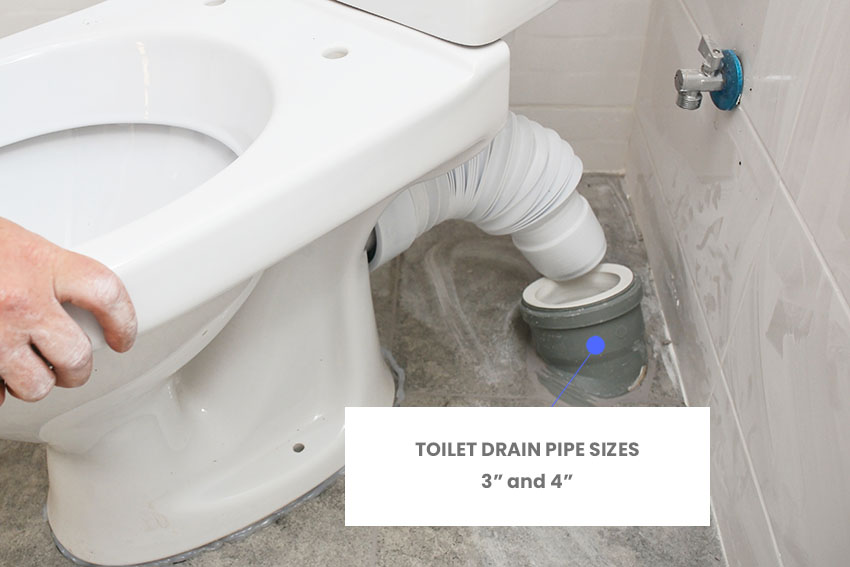
In the modern era, toilet waste drain pipes are available in two plumbing sizes at 3 inches or roughly 8 centimeters, and 4 inches, or 10 centimeters, and choosing between these two pipe sizes is easy enough once a homeowner knows the benefit of each.
The choice comes down to selecting a wider drain pipe for the plumbing, which will allow the waste to move more freely with the risk of clogging at the minimum. This factor makes the 4 inches or 10 centimeters waste drains more advisable since they can carry twice the amount of waste a 3-inch pipe can carry.
There is also the choice of mixing both for homes with multiple bathrooms since, in construction, they can easily connect smaller 3 inches drain pipes to a central waste drain that is 4 inches.
How To Measure A Toilet
One of the most critical measurements a homeowner needs to take is considering the tank height. If there are shelves or any storage above the commode, it’s essential to consider the tank height to fit perfectly in the space.
To measure the tank height, use one end of the measuring tape to measure the top of the tank to the floor. Making sure they have enough space from the tank to the bottom of the cabinet is essential.
This is especially true if the homeowner wants to use the free area of the toilet’s tank to add decor to the bathroom, like candles or dried flowers. This space between the tank and the cabinet will also depend on how big or long the cabinet is.
How To Measure the Toilet Seat
The toilet seat is the next thing to measure, usually the measure of the bowl itself. Seats come in many shapes and sizes, with the most common of them being the elongated and the round, with each having different merits and benefits in how they protrude in a bath or comfort room.
Round seats take up less space, which makes them ideal for smaller areas. At the same time, elongated seats also benefit from being the safest choice to meet the ADA requirements recommended to make bathrooms accessible for everyone.
To measure the seat or bowl shape, measure from the back and extend the tape measure to the front of the bowl, calculating parallel to the floor.
How To Measure Toilet Height
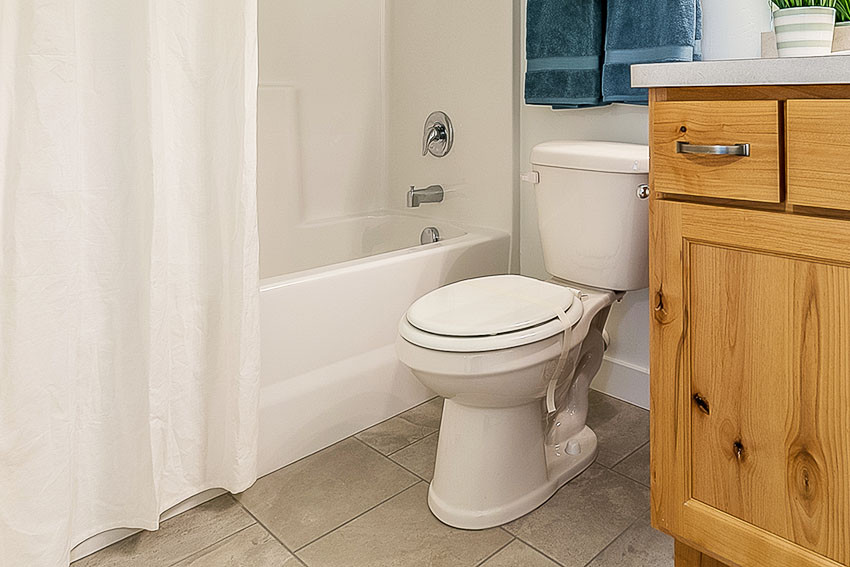
Finding the right seat height is essential to ensure the toilet is comfortable for all the people who will be using it. The total height is gauged from the top of the seat down to the floor or vice versa.
For most products available to purchase for all homeowner use, the height falls between 15 to 19 inches to 38 to 48 centimeters.
The standard sized toilet is usually 17 inches or 43 centimeters, the same for most chair-height toilets.
Commodes that are custom-made can go anywhere from 15 3/8 inches to 39 centimeters to 28 and a half inches or around 72 centimeters.
Most custom-sized designs are easier to clean since they are built to be attached to a wall to make it easy for the homeowners to customize the size, making measuring integral to ensure maximum use and comfort.
Visit our guide on how much a toilet weighs for more related content.

